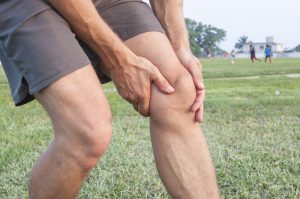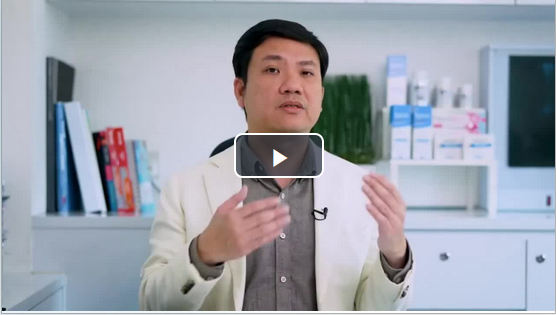A Guide To Relieving Knee Pain
Knee pain is common in many people for several reasons. The knee joint is a synovial joint connecting 3 different bones: the femur, tibia and patella, and is formed by articulations between them.
Knee pain could be caused by multiple reasons, including a sudden injury, an overuse injury, or even by an underlying condition such as arthritis. While many minor knee pain can be relieved through self-care measures, other pain may be relieved through physical therapy, knee braces or even surgery.
Causes Of Knee Pain
One of the main causes of knee pain relates to aging, injury or repeated stress towards the knees.

While being active is healthy for you and your body, multiple injuries may happen as well, often involving the knees. Some injuries could lead to knee join pain, including: sprained ligaments, meniscus tears, tendinitis, and runner’s knee.
Common Knee Problems
While, as mentioned, many knee problems are the result of aging and wear and stress, other knee problems can result from an injury or a sudden strain in the knee. Some of the common problems include:
Sprained Knee
A sprained knee ligament or muscle is typically caused due to a sudden twist in the knee. This means that the tissues holding the knee together may have been stained suddenly, causing pain.
Some symptoms of a sprained knee include:
- Knee pain
- Swelling
- Difficulty walking
- Knee buckling/instability
How long the knee sprain lasts will depend on the type of knee sprain, the severity of the injury and the rehabilitation program.
Torn Cartilage
Cartilage tears typically occur with sprains and trauma, which results in a tear in the menisci. The menisci are pads of connective tissue that enhance stability and act as a shock absorber.
Symptoms of a torn cartilage include:
- Knee pain
- Swelling
- Knee popping/giving way
Tendonitis
Tendonitis is caused by the inflammation of tendons, which may by caused by overuse of the knees during particular activities such as running or jumping. This is also called jumper’s knee which is often caused from frequent jumping on hard surfaces.
Jumper’s knee, if not treated, will weaken your knee tendons and may lead to tears in the tendon.
Some symptoms of Tendonitis include:
- Knee pain around tendon
- Knee swelling
- Knee pain while jumping/walking
- Knee tenderness behind lower kneecap
Arthritis
The most common form of arthritis is Osteoarthritis, which is a degenerative process which wears away the joint cartilage of the knee. This problem often affects middle-age and older people.
This problem could also be caused by excess stress on joints from repeated injuries. This causes joint damage which can accumulate over time, leading to wear and tear in your joints.
Symptoms of arthritis include:
- Knee pain
- Knee tenderness
- Knee stiffness
- Knee inflammation
How Are Knee Problems Diagnosed?
There are multiple ways to diagnose knee problems including imaging tests such as X-rays, MRI scans, CAT scans, Arthroscopy and Radionuclide Bone Scan. Another way where your doctor can diagnose the pain is through inspecting the knee for swelling, pain, tenderness and bruising.
How to relieve knee joint pain?
There are multiple ways to treat knee joint pain, varying depending on it’s cause. One of which is medication.
Doctors may prescribe medication to relieve knee joint pain while treating underlying conditions such as arthritis.
Another form of relieve would be through therapy to strengthen your knee muscles. This will help to stabilise the muscles around the knee. This can be done through physical therapy or different strengthening exercises, based on the different causes of pain. Particularly in a sports-related injury, you may need particular exercises to help correct movement patterns that may affect your knees.
Other remedies to help knee joint pain relieve is through injections and surgery. As it may not be necessary to have knee operation immediately after diagnosis, you should consider the pros and cons of both nonsurgical and surgical rehabilitation.
There are 3 different types of surgery which could help to relieve knee joint pain, which includes:
- Arthroscopic surgery
- Partial knee replacement surgery
- Total knee replacement surgery
Home Remedies For Knee Joint Pain Relief
If you prefer to use home remedies to relieve your knee joint pain, you can try over-the-counter medication such as ibuprofen and naproxen sodium. Alternatively, you can use knee creams that help to ease knee pain.
When relieving knee joint pain at home, it is important to implement self-care measures to help quicken the relieving process. This includes letting your knees have ample rest and reduce repetitive strain in your knees. Remember to give your injury time to heal to prevent further damage.
Applying ice or heat to the pain may also help to relieve both pain and inflammation. To reduce swelling, prop the injured leg on pillows to bring the swelling down.
Compressing your knee will also help to relieve the pain as it will help to prevent excess fluid buildup while maintaining knee alignment and stability? This can be done through compression bandages. Do note that these compression bandages should be tight enough to support your knee while still allowing for circulation.
What To Expect When I Visit The Pain Relief Clinic
A typical visit will involve our doctor first understanding your medical history, concerns and previous experience with other pain treatments.
For patients who have consulted many people but have yet to receive a clear diagnosis, selecting an affordable imaging scan might be recommended to confirm the cause of your pain..
Some patients have already done scans with other doctors for their pain condition but are still not clearly told what they suffer from.
Dr Terence Tan is happy to offer you a second opinion and recommend how best to manage your condition.
We also see patients who already have a confirmed diagnosis from specialist pain doctors, but are "stuck” because treatment options offered are not practical or acceptable.
We can help by discussing options that you might have potentially never been told of.
A common experience is when a patient has already consulted a specialist doctor for pain management and is told to consider orthopaedic surgery which they find too aggressive.
Or they may have seen doctors for their pain and were prescribed painkillers with potential side effects which made them feel uncomfortable.
Many of our patients have also first tried complementary treatments or acupuncture with traditional Chinese pain doctors.
They look for a second opinion after finding any relief experienced from other treatments to be temporary or requiring repetitive treatments, which add up to time and cost.
Especially in such situations, we emphasize using non-invasive medical technology you likely have not been told about .
This can make a big difference to your results.



 Click For Live Back Pain Workshop
Click For Live Back Pain Workshop


